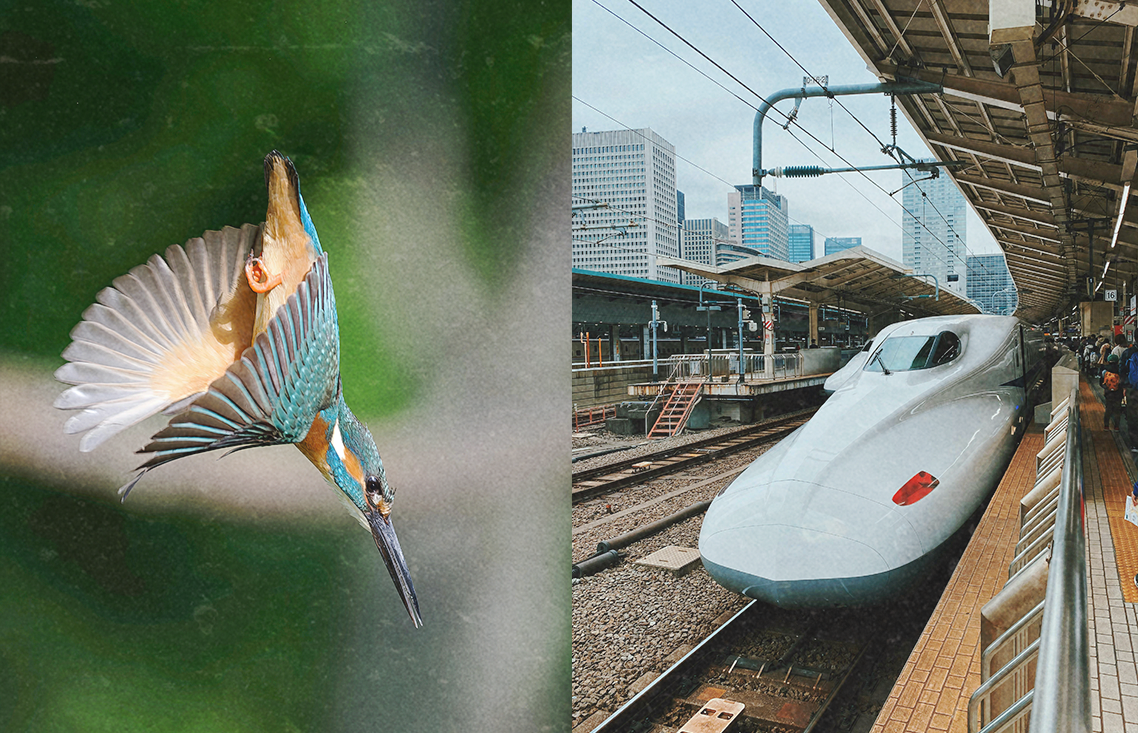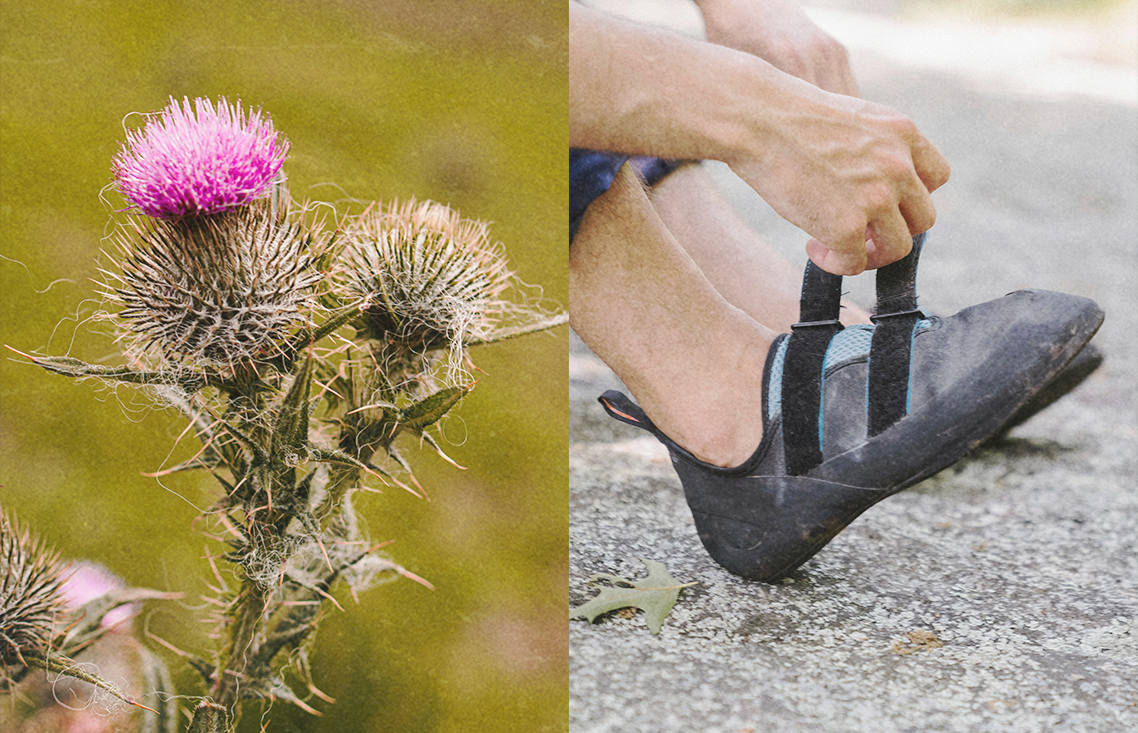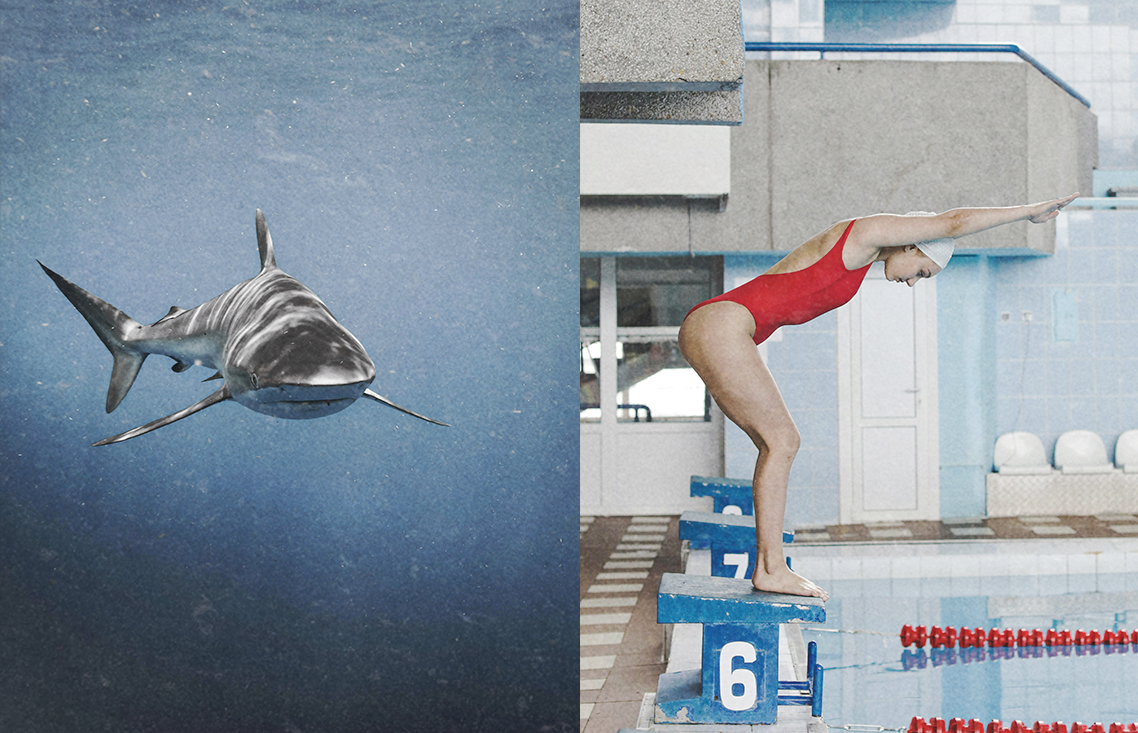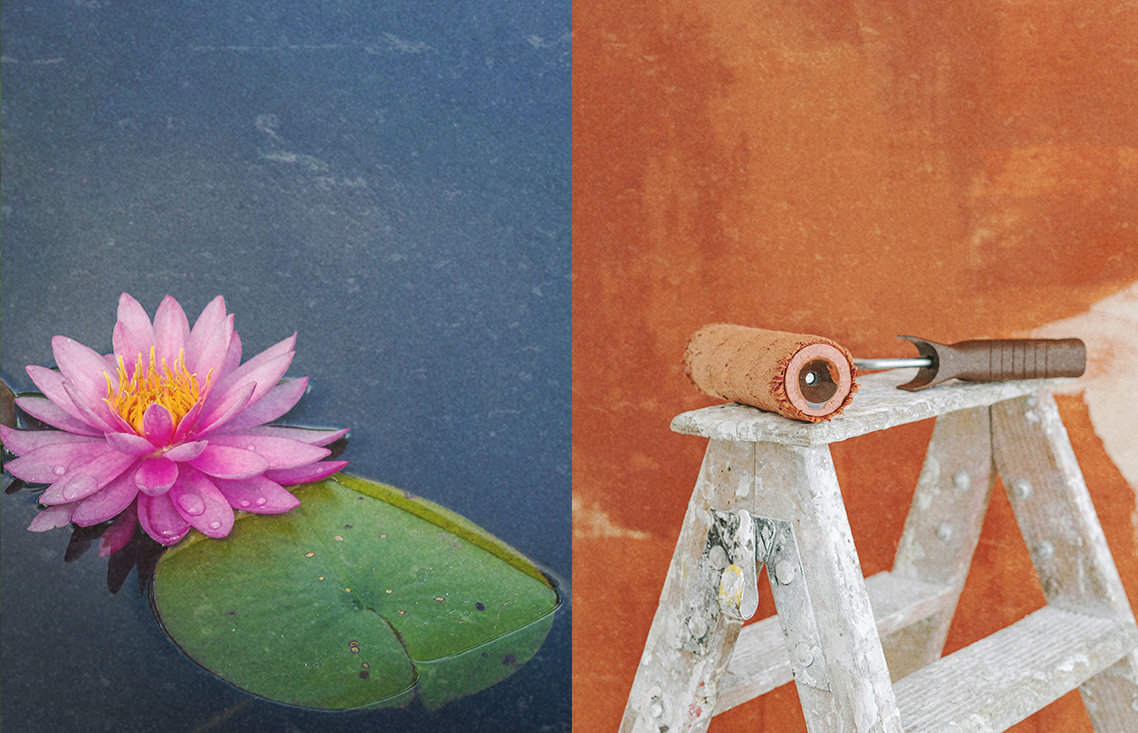Natural Sciences
Biomimicry and Permaculture
Exploring the Synergy
Biomimicry and permaculture are two powerful concepts rooted in sustainable design, and they converge at the intersection of nature-inspired innovation. Both approaches draw inspiration from natural systems, harnessing the genius of ecosystems to create resilient and sustainable solutions for human challenges. Delving into the symbiotic relationship between biomimicry and permaculture, we can discover how these methodologies complement each other in fostering sustainable living.
Biomimicry Defined
Biomimicry, derived from the Greek words “bios” (life) and “mimesis” (imitation), embodies the ingenious concept of drawing inspiration from nature’s time-tested designs and strategies to address human challenges. At its core, biomimicry acknowledges that the natural world, through millions of years of evolution, has perfected efficient, sustainable solutions to a myriad of challenges. By observing and understanding how organisms adapt, thrive, and coexist within their ecosystems, biomimicry seeks to translate these biological principles into innovative solutions for human technologies, processes, and systems.
One remarkable aspect of biomimicry lies in its diversity of applications. Whether it’s mimicking the self-cleaning properties of lotus leaves for innovative surface coatings, learning from the aerodynamics of bird wings to enhance aircraft design, or butterfly-inspired solar panels designed like the wings with biomimetic nano-structures for enhanced light absorption, biomimicry spans a wide range of disciplines. If you scroll through the images below, you can observe some examples of biomimicry in action.
01
The kingfisher, thanks to the shape of its beak and body, can dive into the water without creating a splash, allowing it to hunt fish more efficiently. Inspired by this, Japanese bullet trains adopted a similar streamlined shape to eliminate the loud boom caused by air pressure when exiting tunnels.
02
Have you ever gone on a hike and found burrs clinging stubbornly to your clothes? This happens because of the tiny hook-like structures on burrs that latch onto fibers. This same natural mechanism inspired the invention of Velcro, which functions using the same interlocking principle.
03
Sharks have also developed an incredible evolutionary advantage—their skin is covered with microscopic “denticles” that optimize water flow and significantly increase swimming speed. This design was applied to professional swimwear, making it so effective that it was eventually banned from competitive swimming to maintain fair play.
Paralelly, permaculture is a design philosophy that closely aligns with biomimicry, applying Nature’s strategies to shape sustainable agriculture, regenerative land management, and inclusive community building. Permaculture seeks to create self-sustaining ecosystems that reflect the resilience and diversity found in natural environments. Just like biomimicry, permaculture draws inspiration from Nature’s creativity and wisdom to develop systems that work in harmony with the planet.
The Synergy Between Biomimicry and Permaculture
Observation and Imitation
Biomimicry meets permaculture at the deep observation of natural patterns. While permaculture focuses on applying our understanding of whole ecosystems, biomimicry zooms in to involve imitating more specific biological strategies. Experts in both fields draw inspiration from Nature to develop innovative solutions based on ecological science.
For example, in permaculture, we can observe the process of ecological succession, where barren soil gradually transforms into a thriving forest ecosystem. By understanding this process, we can integrate it into land regeneration strategies to restore degraded landscapes.
Sustainable Design
Biomimicry and permaculture share a common goal of promoting sustainable design.
For instance, if we study how water naturally flows through landscapes, we can apply that knowledge by designing landforms using contour lines to prevent erosion and maximize water retention.
In drier regions, we can take inspiration from Nature’s water-harvesting strategies. Some plants use fine hairs to capture moisture from the air, and spider webs often collect morning dew. These mechanisms have inspired the development of fog catchers and dew-harvesting nets to collect water in arid climates.
Regenerative Practices
Permaculture focuses on regenerative practices, and biomimicry also aims to create systems that actively contribute to a sustainable environment. By integrating regenerative land management techniques with biomimetic solutions, we can increase biodiversity, restore soil fertility, and mitigate climate change effects.
For example, deep-rooted prairie grasses stabilize the soil and store nutrients, inspiring the cultivation of perennial crops like Kernza, which support soil conservation with it’s 3 m long roots.
Similarly, by imitating the natural layering and biodiversity of forests, we can design food forests, which provide abundant and sustainable yields while enhancing ecosystem resilience.
Ethical Framework
Both biomimicry and permaculture adhere to ethical frameworks that prioritize environmental stewardship and community well-being. Whether it’s biomimicry’s core ethos of “life creates conditions conducive to life” or permaculture’s ethical principles, the shared values reinforce a holistic approach to sustainability.
Practice!
To initiate the practice of biomimicry and permaculture, the first step involves observing nature. This observation can take place directly through field trips and physical experiences like hiking, or indirectly through lectures or documentaries, always adopting a fresh, attentive, and curious perspective to question how the natural world operates.
It can be a useful practice to create a biomimetic notebook, which can be a helpful tool in developing a nature-inspired mindset. I’d recommend to structure this notebook by following these 8 steps:
01
Define – What do you want to solve?
What challenge or problem are you addressing?
Why is it important to solve this issue?
How does this problem currently impact people, ecosystems, or industries?
02
Biologize – How does nature solve this?
Reframe your challenge as a question about nature.
E.g.: Instead of “How can we create a strong yet lightweight material?”, ask “How does nature build strong and lightweight structures?”
What functions are important in solving this problem?
E.g., filtering water, storing energy, preventing erosion
03
Discover – What organisms or ecosystems have solutions?
Research organisms or natural systems that have already solved this challenge.
How do they achieve similar functions?
E.g., termite mounds for natural cooling, lotus leaves for self-cleaning surfaces
List at least three biological strategies that nature uses.
04
Abstract – What are the key principles?
What patterns, structures, or processes make these biological strategies effective?
Write a generalized design principle based on nature’s strategy.
E.g.: “Nature strengthens materials by using lightweight internal structures like honeycombs.”
How can this principle be applied beyond its original biological context?
05
Emulate – How can you apply these insights to your design?
How can you incorporate nature’s strategy into your solution?
What materials, structures, or processes could mimic this biological approach?
Sketch or describe your biomimetic design idea.
06
Evaluate – How well does your idea align with nature’s principles?
Does your design follow the biomimicry “Life’s Principles” or the permaculture principles?
E.g.: Adapting to changing conditions, using low-energy processes, upcycling waste.
How sustainable and regenerative is your solution?
What potential challenges might arise in implementing your idea?
07
Refine – How can your design improve?
What changes can you make to enhance efficiency, resilience, or sustainability?
How can you simplify or optimize your design based on further research?
Are there ways to increase biodiversity or ecological benefits?
08
Apply – How can you bring this to life?
How can this biomimetic idea be applied in real-world situations?
What industries, communities, or systems could benefit from it?
What steps will you take to prototype, test, and implement your idea?
+1
Reflect
What have you learned from nature during this process?
How has biomimicry changed the way you think about design and problem-solving?
What will you do next to deepen your connection with nature’s wisdom?
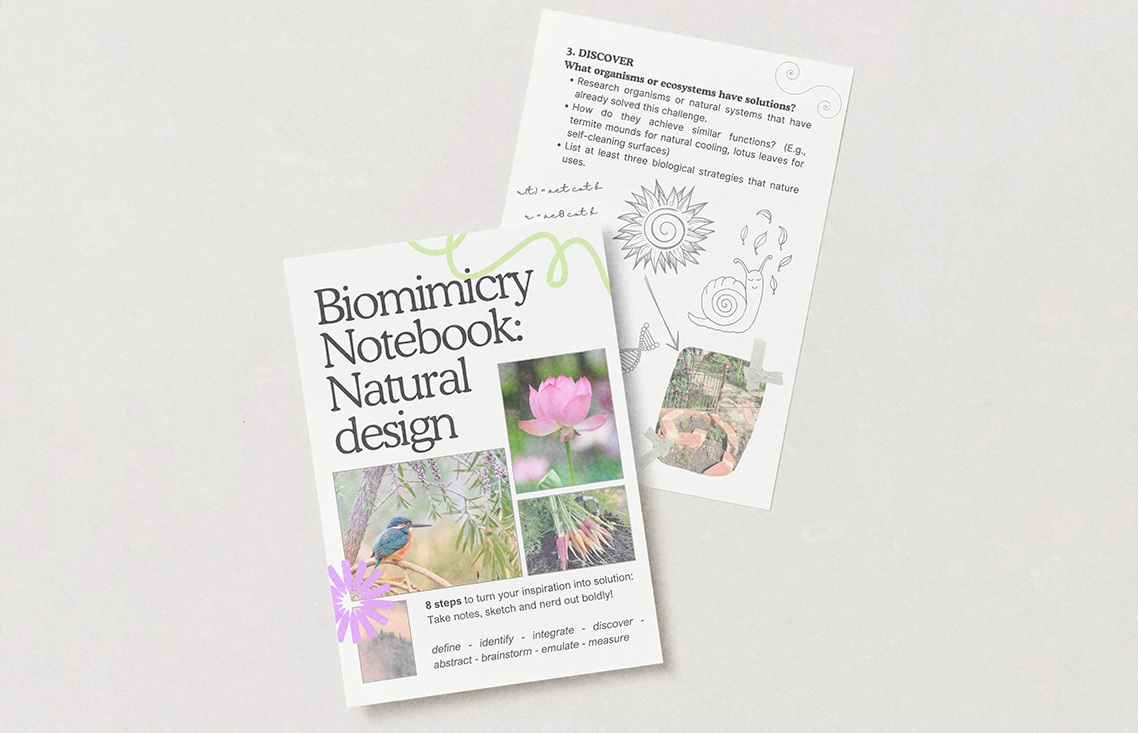
Let’s Talk GET IN TOUCH Let’s Talk GET IN TOUCH Let’s Talk GET IN TOUCH Let’s Talk GET IN TOUCH


